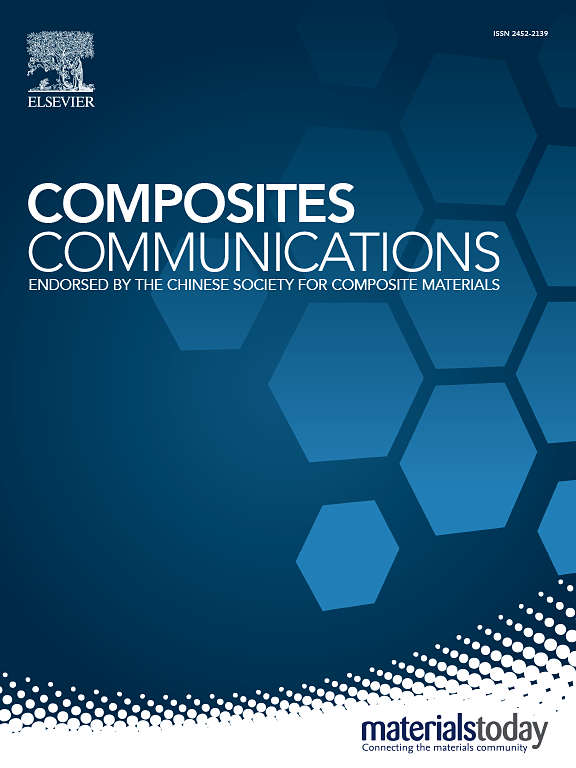Transforming spent lithium iron phosphate cathodes and waste plastics into high-performance sodium-ion battery anodes via co-pyrolysis
IF 6.5
2区 材料科学
Q1 MATERIALS SCIENCE, COMPOSITES
引用次数: 0
Abstract
With the increasing prevalence of lithium iron phosphate (LFP) batteries and waste ultra-high molecular weight polyethylene (UHMWPE) products, advanced recycling strategies have garnered significant interest in sustainable resource development. However, challenges such as cumbersome procedures and improper hazardous waste disposal must be effectively addressed. In this work, we propose a simplified and economical method for converting waste LiFePO4 cathode waste to a novel sodium-ion battery anode material. By leveraging waste plastics to catalyze the production of carbon nanotubes (CNTs) at high temperatures, a novel anode material, R-Fe2P/CNT, was fabricated, which exhibits excellent long-term cycling stability (capacity retention rate of 86.36 % at 1.0 A g−1 after 600 cycles) and rate capability. Furthermore, density functional theory calculations showed improved sodium adsorption and enhanced electronic conducitivity in R-Fe2P/CNT composites. This strategy effectively recycles the valuable components of used batteries and plastics, offering a new "treating waste with waste" concept for the preparation of functional materials.

求助全文
约1分钟内获得全文
求助全文
来源期刊

Composites Communications
Materials Science-Ceramics and Composites
CiteScore
12.10
自引率
10.00%
发文量
340
审稿时长
36 days
期刊介绍:
Composites Communications (Compos. Commun.) is a peer-reviewed journal publishing short communications and letters on the latest advances in composites science and technology. With a rapid review and publication process, its goal is to disseminate new knowledge promptly within the composites community. The journal welcomes manuscripts presenting creative concepts and new findings in design, state-of-the-art approaches in processing, synthesis, characterization, and mechanics modeling. In addition to traditional fiber-/particulate-reinforced engineering composites, it encourages submissions on composites with exceptional physical, mechanical, and fracture properties, as well as those with unique functions and significant application potential. This includes biomimetic and bio-inspired composites for biomedical applications, functional nano-composites for thermal management and energy applications, and composites designed for extreme service environments.
 求助内容:
求助内容: 应助结果提醒方式:
应助结果提醒方式:


